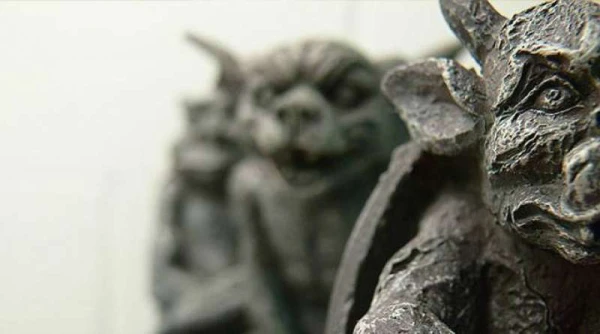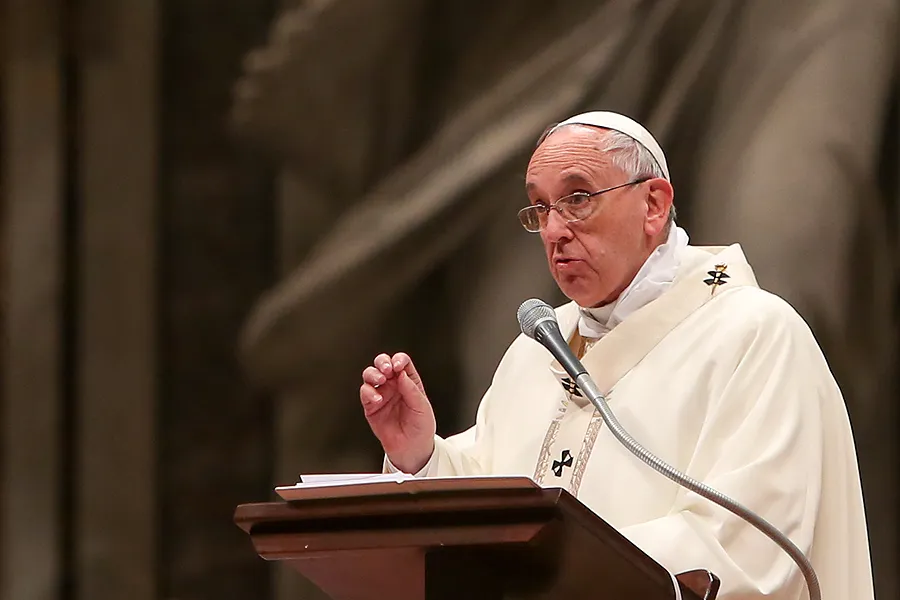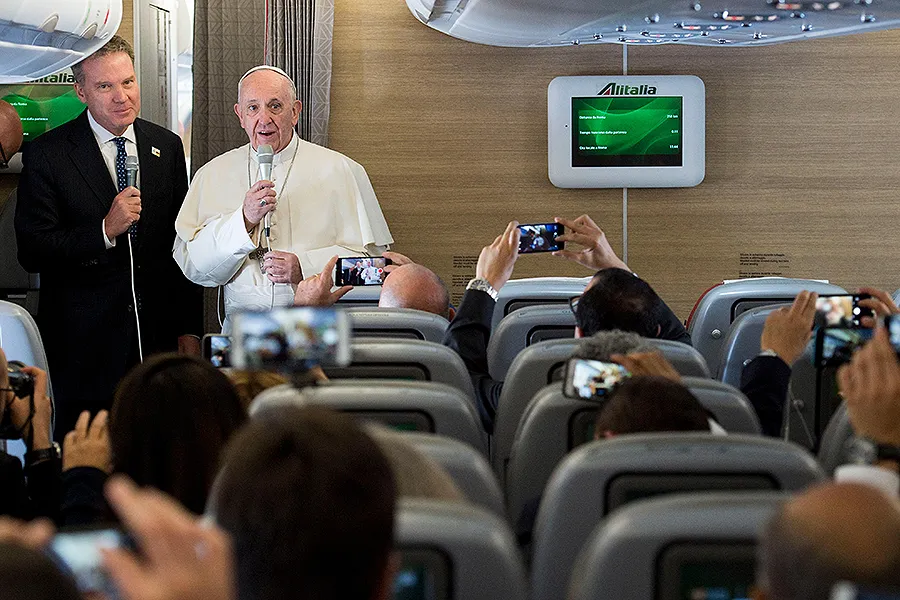
Vatican City, Aug 23, 2019 / 11:49 am (CNA).- An international organization of Catholic exorcists said Thursday that the existence of Satan as a real and personal being is a truth of Christin doctrine.
“The real existence of the devil, as a personal subject who thinks and acts and has made the choice of rebellion against God, is a truth of faith that has always been part of Christian doctrine,” the International Association of Exorcists said in an Aug. 22 press release.
The organization’s release came in response to recent remarks on the devil from Jesuit superior general Fr. Arturo Sosa, SJ, which the organization called “grave and confusing.”
The exorcists said they released their statement to provide “doctrinal clarification.”
Sosa made headlines earlier this week when he told Italian magazine Tempi that “the devil exists as a symbolic reality, not as a personal reality.”
The devil “exists as the personification of evil in different structures, but not in persons, because is not a person, is a way of acting evil. He is not a person like a human person. It is a way of evil to be present in human life,” Sosa said.
Citing a long history of Church teaching on the nature of Satan, including several citations from Pope Francis and his recent predecessors, the exorcists’ organization said that Catholics are bound to believe that Satan is a real and personal being, a fallen angel.
“The Church, founded on Sacred Scripture and on Apostolic Tradition officially teaches that the devil is a creature and a personal being, and she cautions those who, like Father Sosa, consider him only a symbol.”
Sosa’s remarks are “outside the ordinary and extraordinary-solemn magisterium” of the Church, the exorcists said.
The International Association of Exorcists is an “association of the faithful” formally approved by the Vatican’s Congregation for Clergy in 2014. Among its founders was well known exorcist Fr. Gabrele Amorth, who died in 2016.
Sosa, 70, was elected the Society of Jesus’ superior general in 2016. A Venezuelan, he has a pontifical licentiate in philosophy and a doctorate in political science. He served as a Jesuit provincial superior in Venezuela from 1996 to 2004, and in 2014 began an administrative role at the general curia of the Jesuits in Rome.
Sosa has offered controversial comments about Satan in the past. In 2017, he told El Mundo that “we have formed symbolic figures such as the Devil to express evil.”
After his 2017 remark generated controversy, a spokesman for Sosa told the Catholic Herald that “like all Catholics, Father Sosa professes and teaches what the Church professes and teaches. He does not hold a set of beliefs separate from what is contained in the doctrine of the Catholic Church.”
If you value the news and views Catholic World Report provides, please consider donating to support our efforts. Your contribution will help us continue to make CWR available to all readers worldwide for free, without a subscription. Thank you for your generosity!
Click here for more information on donating to CWR. Click here to sign up for our newsletter.





“After his 2017 remark generated controversy, a spokesman for Sosa told the Catholic Herald that ‘like all Catholics, Father Sosa professes and teaches what the Church professes and teaches. He does not hold a set of beliefs separate from what is contained in the doctrine of the Catholic Church.’”
Yes, a Jesuit needs a spokesman (“Mop up in aisle 3!”)…the way Bergoglio remains mystically “silent” until a spokesman or the press… It’s tiresome already, no longer “on the margins” or “on the cutting edge.” It’s passe…which is one of the reasons people are leaving the Church like crazy…especially millennials who don’t care about aging homosexuals forever nodding towards the 1970’s and their “brilliance.”
Sosa: one well-fed Venezuelan…unlike those Venezuelans he “accompanies.” Nonsense…and yes, heresy.
And the Devil rejoices…though he is filled with hatred for humanity and joyless.
It’s entirely plausible that Lucifer currently manifests himself as superior general of the Society of Jesus.
Does now Bishop Barron still believe that Adam the not really exist?
Yes, Bishop Barron has proved a disappointment to me. I liked him when he was plain Fr. Barron.
What does Bishop Barron have to do with this article? He is not mentioned.
I think Fr Sosa should visit Auschwitz, Dachau, Sebrenica, The sites of the Rwandan Genocide, survivors of the Cambodian genocide, Sierra Leonians who had their limbs hacked off by the RUF, and survivors of the atrocities committed by ISIS before concluding there is no Devil. Surely these, as well as the horrors perpetrated in his native Venezuela by the Maduro regime, is sufficient proof of the existence of a malevolent, pure chaotic evil?
Im glad to see this publication.There are too many agnostics and atheists in the world today who continue to corrupt our young people and even the “mature” among us with their perverted philosophy. These people are nearly as dangerous as Satan himself, because they are his agents.
Regarding the Illuminati-Jesuit head honcho, so-so Sosa and the recently discovered non-existence of Satan, we have this (instead) from St. Faustina, the first declared saint for our betrayed 21st Century. Faustina’s vote offsets Sosa’s vote, and the added vote of God (who is not to be confused with Sosa) breaks the tie!
“Today, I was led by an Angel to the chasms of hell. It is a place of great torture; how awesomely large and extensive it is! The kinds of tortures I say: the first torture that constitutes hell is the loss of God; the second is perpetual remorse of conscience; the third is that one’s condition will never change; the fourth is the fire that will penetrate the soul without destroying it–a terrible suffering, since it is a purely spiritual fire, lit by God’s anger; the fifth torture is continual darkness and a terrible suffocating smell, and, despite the darkness, the DEVILS and the souls of the damned see each other and all the evil, both of others and their own; the sixth torture is the constant company of SATAN; the seventh torture is horrible despair, hatred for God, vile words, curses and blasphemies [….]
But wait, there’s more–
“I, Sister Faustina, by the order of God, have visited the abysses of hell so that I might tell souls about it and testify to its existence. I cannot speak about it now; but I have received a command from God to leave it in writing…”
(Diary: Divine Mercy in My Soul, n. 741.)
Those who would deny the presence of hell and it’s care-taker the wicked one and its fallen angels are the first ones who will be there in their good tormented company!
Those who deny the presence of hell and it’s caretaker the wicked one and it’s fallen angels are the first ones who will be there in their company! Amen…